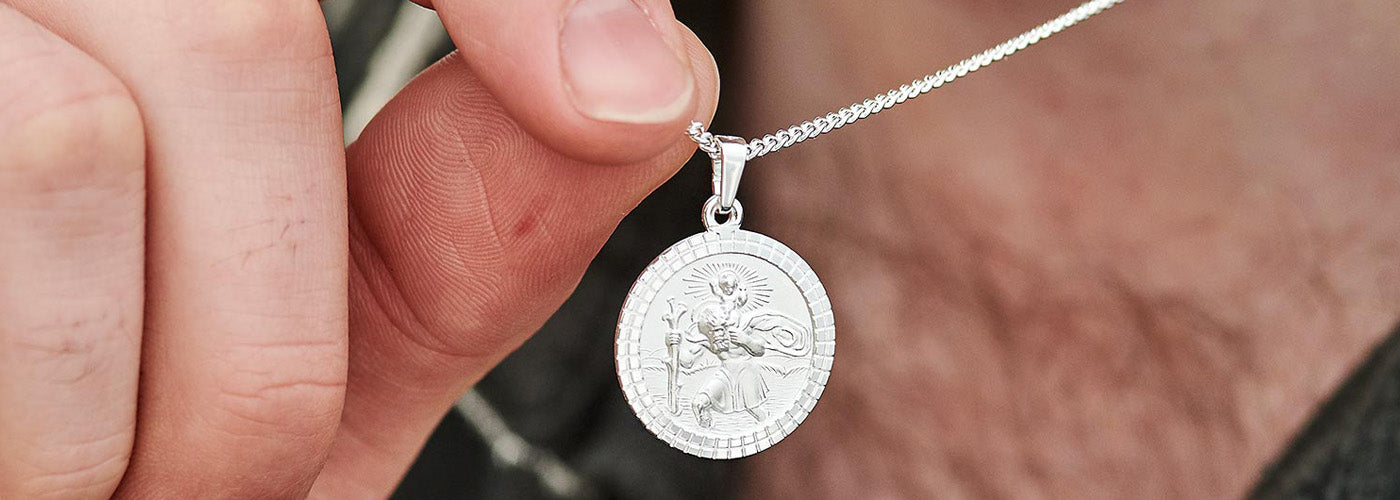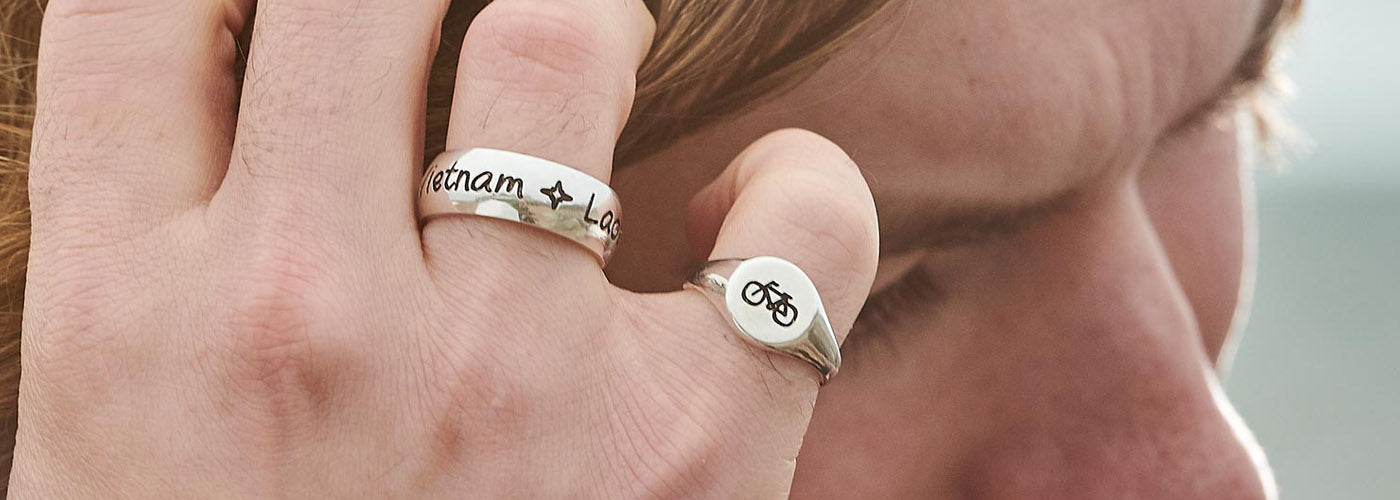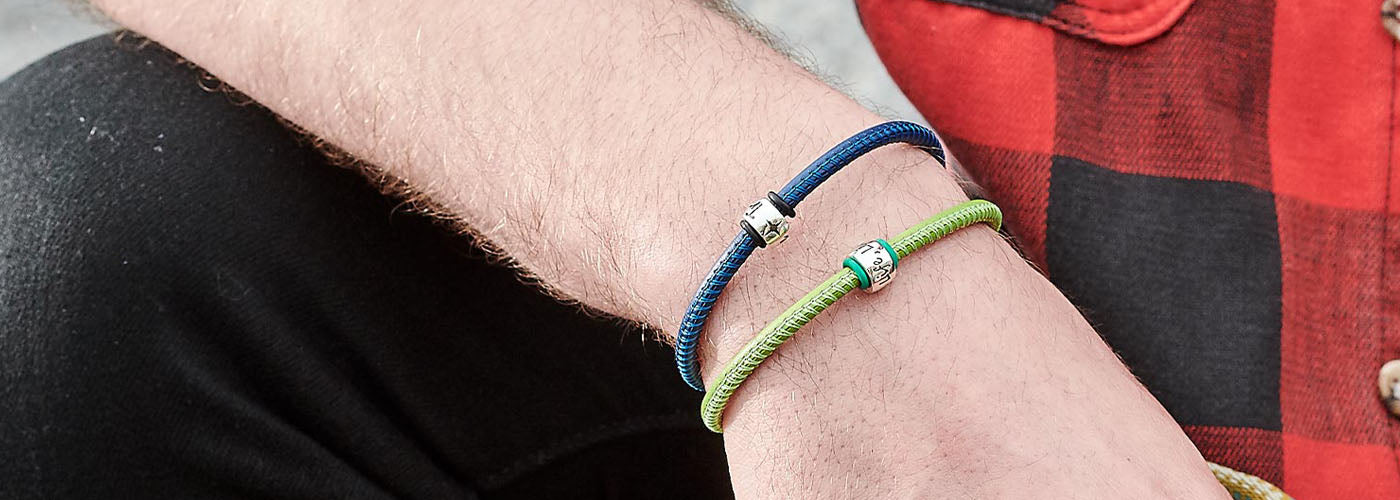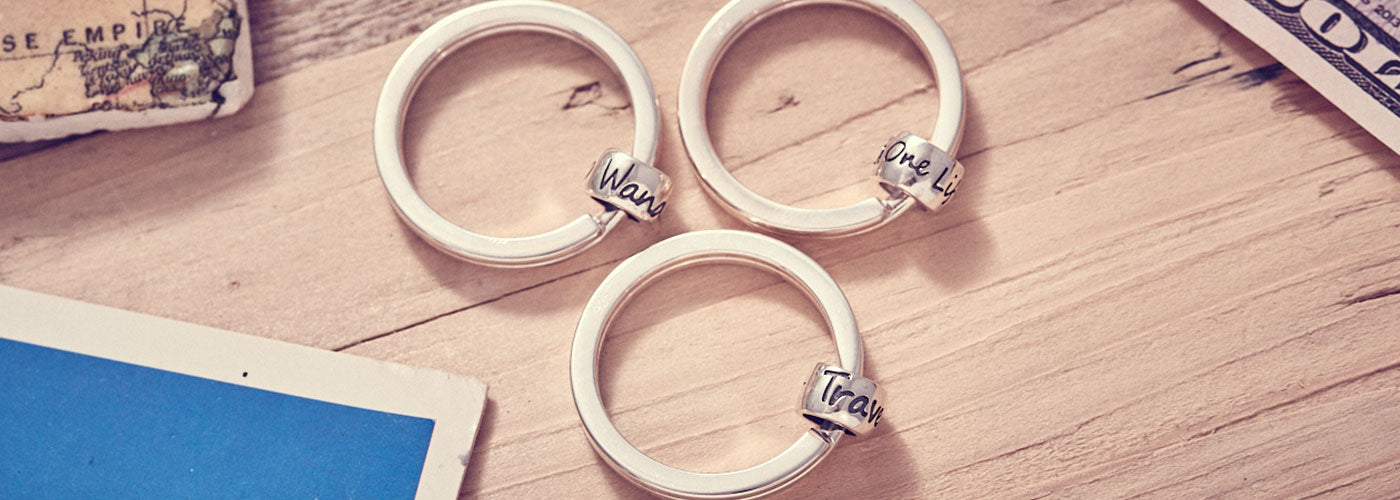In our modern Westernised culture, jewellery is most often thought of as being a women’s accessory, however in reality the history of men’s jewellery is long and rich.
For thousands of years throughout history around the world men have worn jewellery for different reasons including as a symbol of wealth and status symbol or for identification.
The way men have worn jewellery has shifted and changed over the years up until this very day throughout various cultures around the globe.
Our more recent cultural norms around jewellery for men being understated and subdued (which are shifting!) don’t indicate the extensive history of men’s jewellery. In-fact men were wearing jewellery even before women!
In this post, we’ll be exploring the history of men’s jewellery from ancient times up until the present day. You will soon find out that men have a rich history of adorning themselves in precious jewellery.
Men’s Jewellery in Ancient Times (pre 500 CE)
Historians believe that men wearing jewellery could date back potentially as far as 130,00 years ago. The first forms of jewellery found were eagle talons made into necklaces or bracelets by Neanderthals in Croatia.
Very early forms of jewellery also consisted of sea shells, egg shells and animal teeth. In North Africa, a shell necklace was discovered that dated back 82,000 years. True caveman vibes here! During these times jewellery was believed to imbue magical powers onto the wearer and also signify their leadership status. When claws and fangs from animals were used to make jewellery, it was believed they would confer the strength of the animal onto the man wearing it.
In the ancient ages of mysticism and the founding of civilisations, jewellery played the important roles of imbuing magical powers and signifying leadership. Claws and fangs were perforated and strung into necklaces, as they were believed to confer the strength and power of the animal to the wearer.
It wasn’t until around 6000 years ago that jewellery started to resemble what we still wear today with the introduction of copper, silver and gold. This is when jewellery for men started to be used to show social, political and religious significance. Ancient Egypt, Rome and Mesopotamia are where men adorned themselves in this type of jewellery.

Egypt
Egyptian Pharos are probably most synonymous with elaborate gold and silver jewellery. They wore extravagant necklaces and bracelets to symbolise their wealth and to serve as protection in the afterlife. This is why they were always mummified and laid to rest in their tombs with their jewellery. These jewels were believed to bridge the gap between humans and Gods and so by adorning themselves they would be closer to divinity and have greater spiritual influence over their people.
Egypt was also the first place that we can see the use of signet rings as an officiant seal to mark letters and documents.

Ancient Rome
In ancient Rome, soldiers wore rings to indicate their rank and accomplishments on the battlefield. Men who were ranked higher in society in Ancient Rome such as emperors wore diamonds and other precious stones imported from India and Sri Lanka.
Mesopotamia
In Mesopotamia (modern-day Iraq), men wore chunky necklaces, ankle bracelets and ring with precious stones. This jewellery was worn to ward off evil and protect them during times of war.
Ancient Greece
In Ancient Greece, high-ranking men decorated their heads with laurels and wraps their shoulders with garlands. Soldiers wore leather or metal cuffs for protection.
Mayan
Mayans, who are indigenous to Central America, were always master jewellery makers and adorned themselves in precious metals and stones (jade in particular was regarded as the most precious) as a mark of status, wealth, religion and royalty. Men and women both wore the same jewellery, except lip and nose plugs which were reserved for high-ranking men only.
Men’s Jewellery in the Middle Ages (5th - 15th century)
During this time, men often wore jewellery to signify religious or cultural significance. Christian men began wearing crosses. This is also the period that Catholic men began to wear St Christopher medallions for protection.
Signet rings were commonly used by meant to sign and seal documents and letters. These rings were a symbol of wealth and status but were also used as markers of loyalty to their lineage. During this time the patriarchy rose and men’s jewellery started to become more distinct from women’s jewellery.
In the Middle Ages, trade between Asia and Europe took off. This meant the exchange of more precious stones throughout the world. We start to see all kinds of gems being encrusted onto metal jewellery and even onto clothing for royal men.
In the middle ages, jewellery was also worn by Royal men in India. Male rulers would adorn themselves in precious metals and gems to signify their status and show off their high level of opulence. Statement jewellery for men in India today is still more popular than in other places in the world.
Indian royalty was adorned in jewellery as well. From the Mughal to the Maratha empires, the male rulers covered themselves in jewels and precious metals to signify their authority and opulence.

Men’s Jewellery in the Renaissance and Baroque Era (15th to 16th century)
During this time, men’s jewellery expanded to include broaches, cufflinks and tie pins which often feature intricate designs and gemstones. Men also started wearing watches during this period which were considered very luxury items. We still have many remnants of the jewellery from this era today.
Men’s Jewellery in the Victorian Era (19th century)
During the Victorian Era, men’s jewellery became more understated and simple. Queen Victoria had a love for mourning jewellery, which was often made of Onyx. Men, therefore, started to wear morning jewellery to honour those who had passed.
In France, after Napoleon was crowned emperor, jewellery become more popular. This spread through much of Europe where jewellery was used to symbolise political power and status. Around this time was also when the watch chain was invented. This became a staple accessory for men in Europe.
It was during the Victorian era that iconic and well-known brands that still exist today were established including Tiffany & Co, Cartier and Bulgari.

Men’s Jewellery in the 20th Century (1900 - 2000)
In the first part of the 20th century, jewellery for men was very conservative and limited to pocket watches, cufflinks and signet rings.
Later in the 20th century, jewellery started to be used more as a fashion statement and become more experimental. With the introduction of Hollywood and rock music stars, men began wearing more ‘flamboyant’ jewellery again such as bracelets, earrings and necklaces.
In the 1980s and 1990s hip hop culture exploded and popularised gold chains and pendants for men.
During this time, industrialisation made jewellery accessible to more people, not just those of the highest rankings in society.

Men’s Jewellery today (2023!)
Men’s jewellery is more diverse than it has been in many years. Due to movements associated with gender identity and gender fluidity, more men are choosing to wear jewellery (traditionally more feminine) to express themselves and their sense of fashion.
Men’s jewellery is made out of a variety of materials including gold, silver, platinum, titanium, leather, crystals, cotton, wood and even silicone.
Luxury watches are still a staple piece of jewellery that many wealthier men still wear to signify their status. However, many men from all socio-economic backgrounds have access to quality and stylish watches to wear.
As we move further into the 21st century we are starting to see a new renaissance of jewellery trends for men and new and creative ways for men to adorn themselves.
Travel Safe Compass St Christopher Large Silver Necklace
Off the Map Men’s Jewellery
Off the Map Jewellery has an extensive range of unique jewellery for the 21st century. Browse our collection of traditional pieces such as St. Christopher pendants and signet rings with a modern twist.
A lot of our jewellery is inspired by travel and adventure as well as sentimental and personalised pieces which make great gifts for him.
All of our jewellery is handcrafted out of high-quality metals such as sterling silver and solid gold in Brighton, UK.











